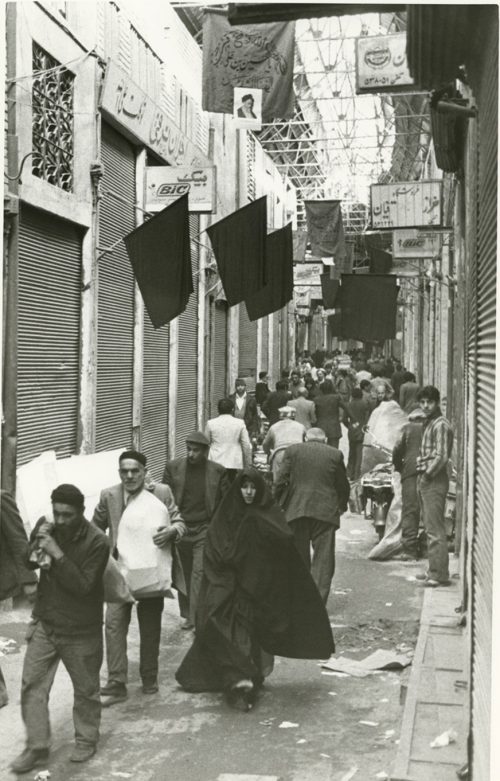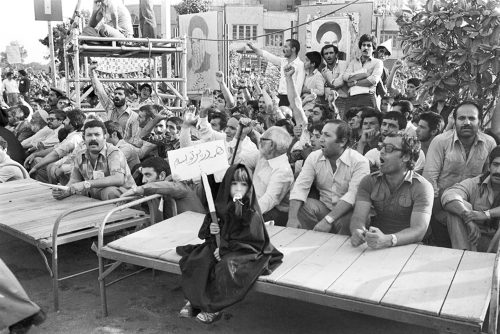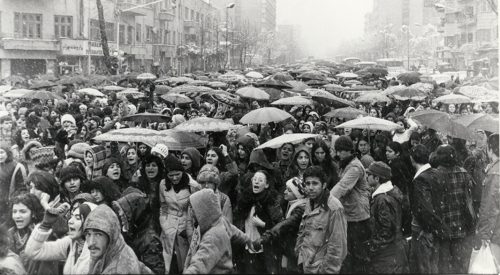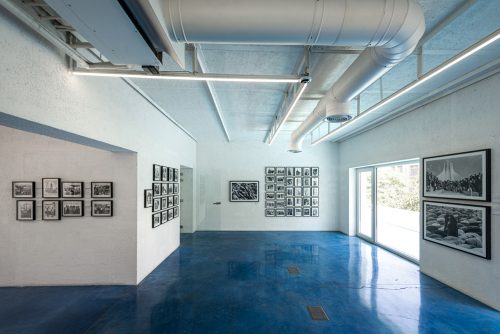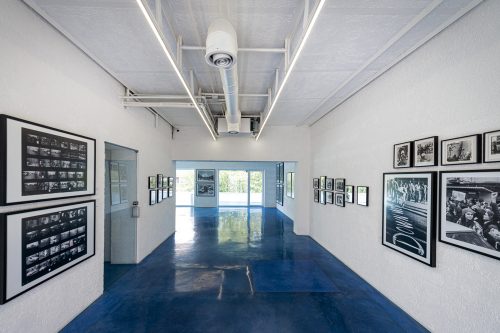
Photo By M. Sayad
Photo Exhibition by Mohammad Sayyad and Book Launch | Part 1: Photos of the Revolution
Jul. 24 – Aug. 18, 2020 |
- Hall A
- Hall B
Mohammad Sayyad Sabour (b. 1947, Bandar-e Anzali, Iran) aka “M. SAYAD” is one of the forerunners of Iranian photojournalism. He moved to Tehran when he was a teenager and started working in the Photo Plaza studio, where he learned photography. With a passion for photojournalism, he became a member of the Association of Iranian Journalists in 1969, embarking on a new path in his professional life. Between 1971 and 1978, he worked for the Ayandegan newspaper for its political, sports, and social sections. In 1978, as he was still working for Ayandegan, he was recruited by the Associated Press- a collaboration that lasted for more than two decades.
Since the very beginning of Iran-Iraq War, Sayyad started going to the war zones to take pictures. His photographs of the revolution days as well as the years of war have been extensively published in books, such as Enghelab-e Noor, 444 Days: The Story of the American Hostages in Tehran, Romantic Defense, and The Imposed War: Defense vs. Assault. In 1979, he published The Protest in collaboration with Kaveh Golestan, which is a photographic report of the events of the days leading to the victory of the Iranian Revolution. In 1980, Sayyad’s photographs of the failed Operation Eagle Claw in Tabas won the Prize of the best Middle Eastern photography. Sayyad’s first solo exhibition, “The Land of Bewilderment,” was held at Tehran’s Nabshi Center in 2019, depicting the afflictions of Iraqi Kurd refugees, forced to migrate to Iran under Saddam’s regime. Sayyad is a member of the Association of Iranian Journalists. He lives and works in Tehran.
The new exhibition entitled “PHOTO BY M. SAYAD” is being held at Nabshi Center in the summer of 2020. Consisting of two parts, the photos revolved around two subject matters: the Iranian Revolution and the Iran-Iraq War. More than a hundred shots are included in each section in a documentary, news-like fashion, narrating stories of these two important events, both of which have the potential of being immortalized as historic icons. After “The Land of Bewilderment,” which depicted the afflictions of Kurdish refugees and immigrants that sought asylum in Iran under Saddam’s regime, this is the second exhibition of Sayyad’s press photographs at Nabshi Center.
All the photographs in both parts of the exhibitions are captured by Sayyad’s ever-present camera. There are also the photographer’s prints, prepared back in the day for news agencies, occasionally with captions or short texts. Some of the negatives were selected to be printed on photographic paper together with scanned contact sheets from the photographer’s archive, which is reminiscent of shooting scripts.
The narrative of the first section starts in the decisive days of revolution: photos overflowing with crowds, reawakening the memories of days in which the streets of Tehran were filled with passionate people anticipating victory. In this series of photographs, we see a narrative of the Revolution in a number of acts: one section depicts it until the end of 1987, while the other illustrates the currents of the early 1980s and the events that followed the Revolution. By spending time among the crowds and shooting scenes from the people’s perspective, Mohammad Sayyad has captured moments that convey both feelings of fear and hope. A considerable number of prints and negatives from this period have been lost during the Revolution and its related events, which has made Sayyad’s pile of photographic documents from the Revolution relatively thinner than his files on other subject matters.
The second section of the exhibition is dedicated to the eight-year period of the Iran-Iraq War. The photos from the time of war begin with people’s everyday life, going on to include the war zones and the frontlines, the devastations, the resistance of Khorramshahr and Ahvaz, aerial bombing of cities, reflecting both epic and tragic moments. The important feature of these photographs is the faithful depiction of reality, with no intention of manipulating or staging a given event. M. SAYAD believes that a photojournalist’s each and every click of the shutter should come from a place of integrity.
Part 1: Photos of the Revolution
July 24 to August 18, 2020
Sunday to Thursday: 12 PM – 8 PM
Fridays: 4 PM – 8 PM
Nabshi Center is Closed on Saturdays







